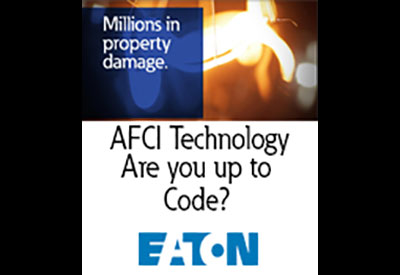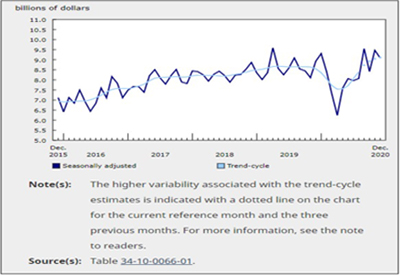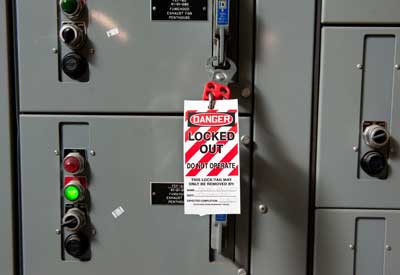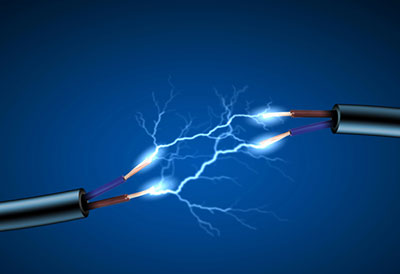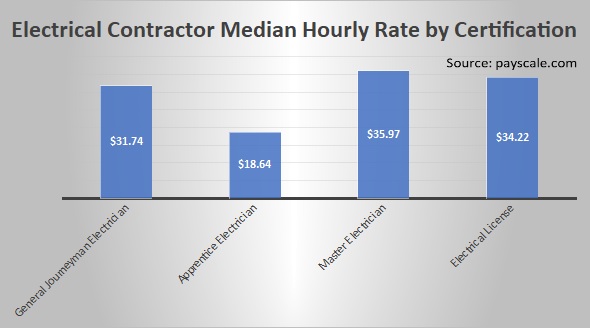Guide to the Canadian Electrical Code, Part 1 – A Road Map: Section 38

July 12, 2021
By William (Bill) Burr
Section 38 — Elevators, dumbwaiters, material lifts, escalators, moving walks, lifts for persons with physical disabilities, and similar equipment.
The Code is a comprehensive document. Sometimes it can seem quite daunting to quickly find the information you need. This series of articles provides a guide to help users find their way through this critical document. This is not intended to replace the notes in Appendix B or the explanations of individual requirements contained in the CEC Handbook, but will hopefully provide some help in navigating the Code. These notes are based on the 25th edition.
The Numbering of the rules in Section 38 is an exception to the numbering system outlined in the Preface of the Code. The numbering of the rules in this section corresponds with the rule numbers of associated rules in the ASME A17.1/CSA B44, Safety Code for Elevators and Escalators and the CSA-B355, Lifts for Persons with Physical Disabilities. The reason for this is that most of these rules will be used by elevator constructors.
Rule 38-001 Scope points out that this section is amendatory or supplementary to the general rules of the Code and applies to the installation of electrical equipment and wiring of elevators and similar equipment as per ASME A17.1/CSA B44, Safety Code for Elevators and Escalators; CSA B44.1/ASME A17.5, Elevator and Escalator Electrical Equipment; CSA B355, Lifts for Persons with Physical Disabilities; and CAN/CSA-B163, Private Residence Lifts for Persons with Physical Disabilities.
Rule 38-002 Special terminology contains definitions for specific equipment – Motor controller, Operating device, and Signal equipment. Note that control equipment may be located in a single or multiple enclosures.
Rule 38-003 Voltage limitations outlines that generally voltage is limited to 300 volts except it is limited to 750 volts for:
• branch circuits to door operator controllers,
• door motors,
• heating and air-conditioning equipment, located in the car,
• branch circuit and feeders to motor controllers,
• driving machine motors,
• machine brakes, and motor-generator sets.
Branch lighting circuits are limited in accordance with Section 30. Note that CSA B44.1/ASME A17.1 also has voltage limitations within equipment.
Live parts enclosed requires that all live parts that can be contacted by users of the device must be enclosed to protect against accidental contact.
Rule 38-005 Working clearances – as an exception to the Requirements in Rule 2-308, the minimum headroom in working space around elevator associated electrical equipment is 2M. In addition, the working space of 1M in Rule 2-308 need not apply where only authorized persons have access and where other conditions as listed in sub-rules (2)(a) to (d) exist.
Rule 38-011 Insulation and types of conductors – conductors in hoistways, cars, platforms, wellways, machine rooms, and between the car or counterweight and the raceway must be selected in accordance with Tables 11 or 19 and the specific conditions of use, and the requirements of Rule 2-130. Note that the insulation voltage rating of all conductors must be equal to the maximum nominal circuit voltage rating of any conductor within the same enclosure, raceway, or cable.
Rule 38-012 Minimum size of conductors – the minimum size for conductors in travelling cables is:
a) No.14 AWG copper or equivalent ampacity for parallel conductors for lighting circuits, and
b) No.20 AWG copper for operating, control, signal, and extra-low-voltage lighting circuits.
The minimum size of conductor for all other operating, control, signal, and communications circuits must be No. 26 AWG copper.
Rule 38-013 Ampacity of feeder and branch-circuit conductors – the ampacity for conductors supplying:
• the driving motor of the motor-generator set supplying power to the driving machine motor of a unit with generator field control, is based on the nameplate current rating of the driving motor.
• a single motor is based on Rule 28-106 and Table 27.
• a motor controller is based on the motor controller nameplate current rating plus all other connected loads.
• a single power transformer is based on the nameplate current rating of the power transformer plus all other connected loads.
• more than one motor, motor controller, or power transformer is based on the sum of the nameplate current ratings of the equipment plus all other connected loads. Ampere ratings of the motors are based on Rule 28-108 and Table 62.
Rule 38-014 Feeder demand factor – select from Table 62.
Rule 38-015 Motor controller rating – select according to Rule 28-500(1) except when the controller inherently limits the available power to the motor and is marked “power limited”.
Rule 38-021 Wiring methods outlines the various wiring methods for specific equipment and locations for:
• elevators: hoistways, cars, within machine rooms, control rooms and machinery spaces, control spaces, and counterweights.
• escalators: insulated conductors and cables used in Class 1 extra-low voltage and Class 2 low-energy circuits, extra-low-voltage control cable, communication cable, fire alarm and signal cable, multiconductor jacketed thermoplastic-insulated cable, hard-usage cable, extra-hard-usage cables, flexible cords and cables that are components of approved equipment and used in extra-low-voltage circuits.
• lifts for persons with physical disabilities: Insulated conductors and cables used in Class 1 extra-low voltage and Class 2 low-energy circuits, flexible cords and cables that are components of approved equipment and used in extra-low-voltage circuits (30 V or less).
Rules 38-022, to 38-025 outline the requirements for provision of single, sole, or separate branch circuits, for specific lighting, receptacles, other utilization equipment used in conjunction with Section 38 devices, or locations. In addition these rules specify locations for required lighting control switches and prohibit required lighting to be supplied from the load side of a GFCI.
Rules 38-032 and 38-033 reference Rule 12-910 and Table 8 for metal, non-metallic wireways and number of conductors in raceways.
Rule 38-034 Supports outlines that cables or raceways must be securely fastened to guide rails, moving walk trusses or hoistways, wellways, or runways construction.
Rule 38-035 Auxiliary gutters references Rules 12-1900, 12-1902, and 12-1904.
Rule 38-036 Grouping of insulated conductors lists cables and insulated conductors that are permitted to be run in the same raceway or travelling cable if all are insulated for the maximum voltage.
Rule 38-037 Wiring in hoistways, machine rooms, control rooms, and machinery spaces and control spaces specifies that only insulated conductors used in connection with the operation, protection, communication, control or lighting and ventilation of equipment covered by Section 38 is permitted to be installed in hoistways, runways, machine rooms, control rooms, machinery spaces, control spaces or escalator wellways.
Rule 38-041 Suspension of travelling cables lists the locations and methods of suspending travelling cables.
Rule 38-042 Hazardous locations references Section 18.
Rule 38-043 Location of and protection for cables requires minimizing any possible damage to conductors and, where necessary, protecting with guards.
Rule 38-044 Installation of travelling cables provides that travelling cables suitably supported and protected from damage need not be installed in conduit or raceway.
Rule 38-051 Disconnecting means sets out the need to provide:
• characteristics, visibility, indication, identification, accessibility, and location of disconnecting means for all ungrounded conductors of:
• drive motors, ventilation, heating, air-conditioning, lighting, and control circuits for each device covered by this Section.
• It requires that there be only one disconnect for multiple driving machines of single devices, and
• that a sign identifying the location of supply side overcurrent devices be provided.
The rule also prohibits automatic closing of disconnection means on power failure restoration and requires manual closing only.
38-052 Power from more than one source requires that in single and multi-car installations, where equipment is supplied from more than one power source, a single disconnect is provided within sight of all the equipment served. Where parts of controllers or interconnection of controllers are energized from a different source a clear, legible warning sign is required.
Rules 38-053 and 38-054 requires that:
• single, enclosed, externally operable, fused motor circuit switches or circuit breakers,
• capable of being locked in the open position,
• for disconnecting all ungrounded car light, receptacle, ventilation, heating, and air-conditioning supply conductors,
be located in the machine or control room for that car.
The disconnecting means needs to be numbered to correspond to the car light source it controls and be provided with a sign identifying the location of the supply overcurrent device.
Rule 38-055 Utilization equipment disconnecting means requires that:
• a single, enclosed, externally operable, fused motor circuit switch or circuit breaker,
• capable of being locked in the open position,
• for disconnecting each branch circuit for other utilization equipment supply conductors,
• be located in the machine or control room.
The disconnecting means needs to be numbered to correspond to identifying number of the equipment it controls and be provided with a sign identifying the location of the supply overcurrent device.
Rule 38-061 Overcurrent protection:
• References Section 14 and Section 16, for provision of overcurrent and protection for operating, control, signal, Class 2 extra-low voltage, and low-energy circuits.
• The overload protection for each ac drive motor of a Section 38 device, or of a motor-generator set supplying current to the machine-drive motor, is selected in accordance with Rule 28-302.
• Overload devices shall be provided for each dc machine-drive motor providing power to two drive motors, and where the overcurrent protection of Section 14 is inadequate, or subject to reduced voltage during levelling.
Rule 38-062 Selective coordination requires overcurrent protection to be coordinated with upstream overcurrent devices.
Rule 38-071 Guarding equipment requires that driving machines, motor-generator sets, motor controllers, and disconnecting means shall be installed in a room or space that is secured against unauthorized access except where motor controllers are:
• in enclosures with doors or removable panels capable of being locked in the closed position, and the disconnecting means is integral to or adjacent to the motor controller,
• in enclosures that are in the balustrade on the side away from the moving steps or treadway,
• provided as an integral part of the motor controller, operable without opening the enclosure,
• in elevators with driving machines located on the car, counterweight, or in the hoistway and driving machines for dumbwaiters, material lifts, and lifts for persons with physical disabilities.
Rules 38-081 to 38-084 specify that all metal parts of Section 38 devices must be bonded to ground in accordance with Section 10.
Rule 38-085 Ground fault circuit interrupter protection for personnel requires that:
• except for a single receptacle supplying a permanently installed sump pump, each 125V, single-phase receptacle installed in pits, hoistways, elevator and enclosed vertical lift car tops, escalator and moving walk wellways shall be a Class A GFCI type.
• all 125V, single-phase receptacles installed in machine rooms and spaces shall have Class A GFCI protection.
Rule 38-091 Emergency power provides guidelines for operation of elevators from an emergency power supply in the event of normal power failure:
• Where the elevator system regenerates power back into a power source that may be unable to absorb it, other building loads, such as power and lighting, that are automatically connected to the emergency power may be utilized to absorb the regenerative power.
• A disconnecting means in accordance with Rule 38-051 must disconnect both the emergency power source and the normal power source.
• Where an additional power source is connected to the load side of the disconnecting means, which allows automatic movement of the car or movement of the carriage controlled by users, the disconnecting means shall be provided with an auxiliary contact that:
a) mechanically opens positively,
b) is not solely dependent on springs, and
c) must cause the additional power source to be disconnected from its load when the disconnecting means is in the open position.
In the next installment, we will be discussing Section 40 — Electric cranes and hoists.
Source: CSA C22.1:21, Canadian Electrical Code, Part 1 – Safety Standard for Electrical Installations. © 2021 Canadian Standards Association. Please visit store.csagroup.org. With the permission of CSA Group, material is reproduced from CSA Group standard CSA C22.1:21, Canadian Electrical Code, Part 1 – Safety Standard for Electrical Installations. This material is not the complete and official position of CSA Group on the referenced subject, which is represented solely by the Standard in its entirety. While use of the material has been authorized, CSA Group is not responsible for the manner in which the data are presented, nor for any representations and interpretations. No further reproduction is permitted. For more information or to purchase standard(s) from CSA Group, please visit store.csagroup.org or call 1-800-463-6727.
William (Bill) Burr is an associate member of the Canadian Electrical Code, Part 1, Technical Committee and formerly Chair of the Canadian Advisory Council on Electrical Safety (CACES), Chief Electrical and Elevator Inspector for the Province of BC & the Northwest Territories, Director of Electrical and Gas Standards Development and Director of Conformity Assessment at CSA Group. Bill can be reached at Burr and Associates Consulting billburr@gmail.com.



